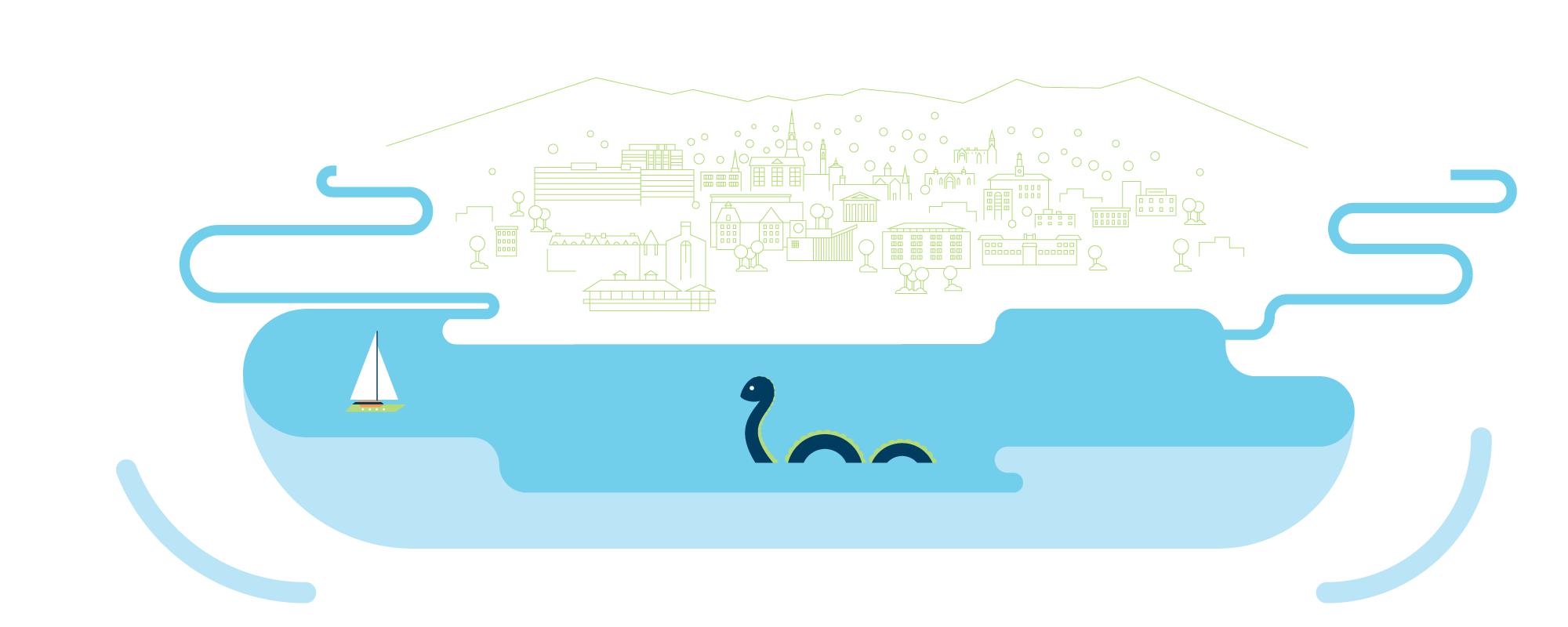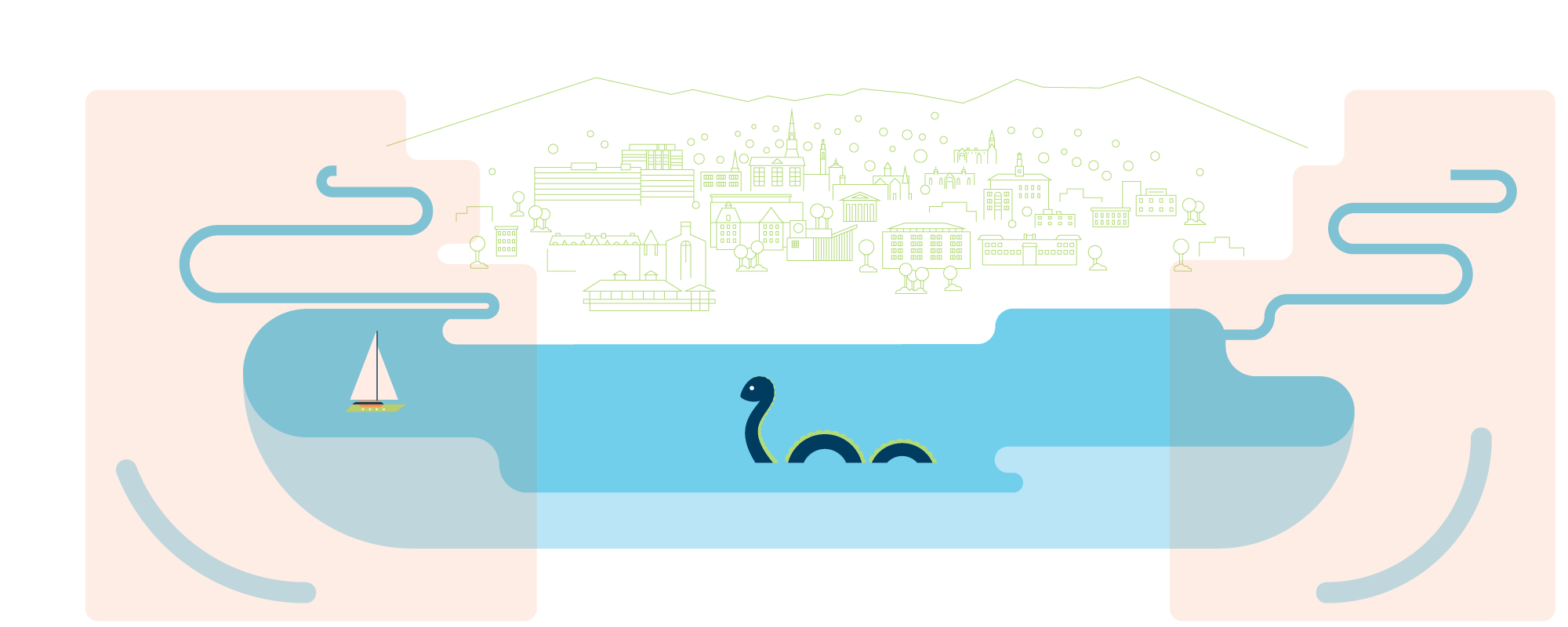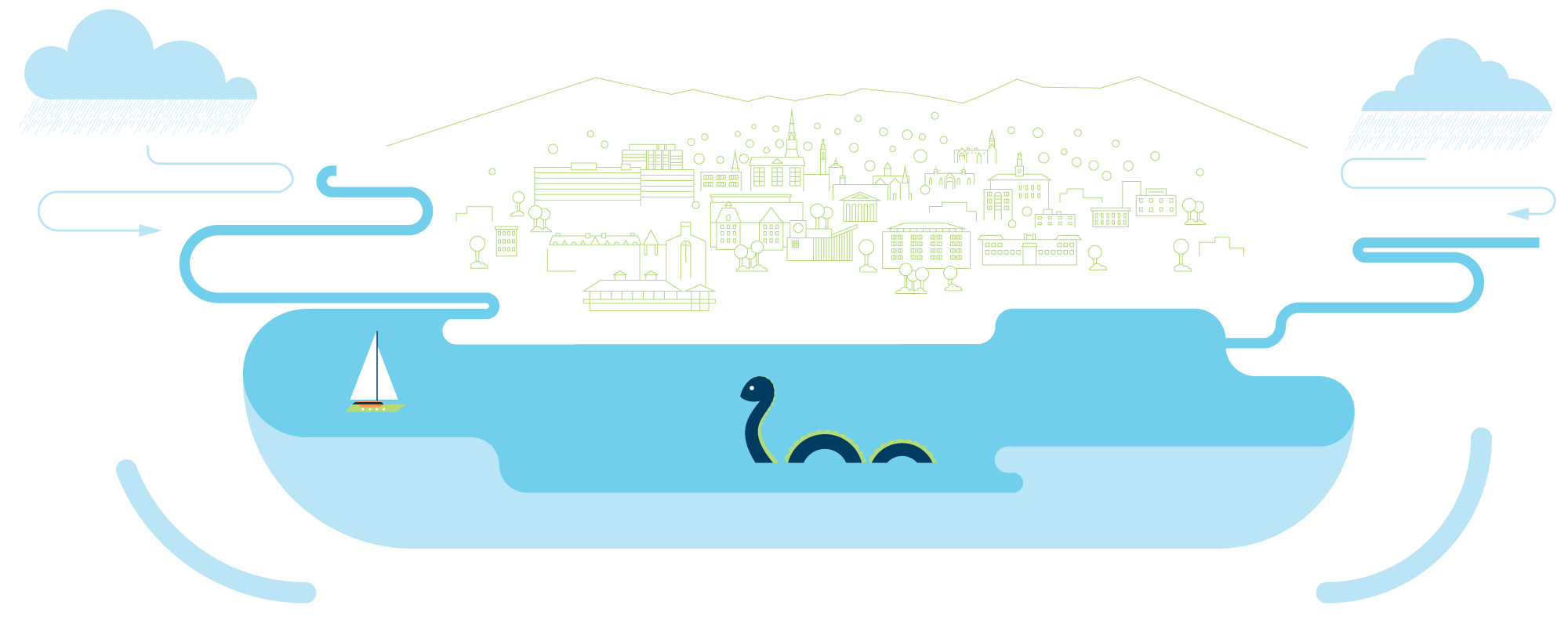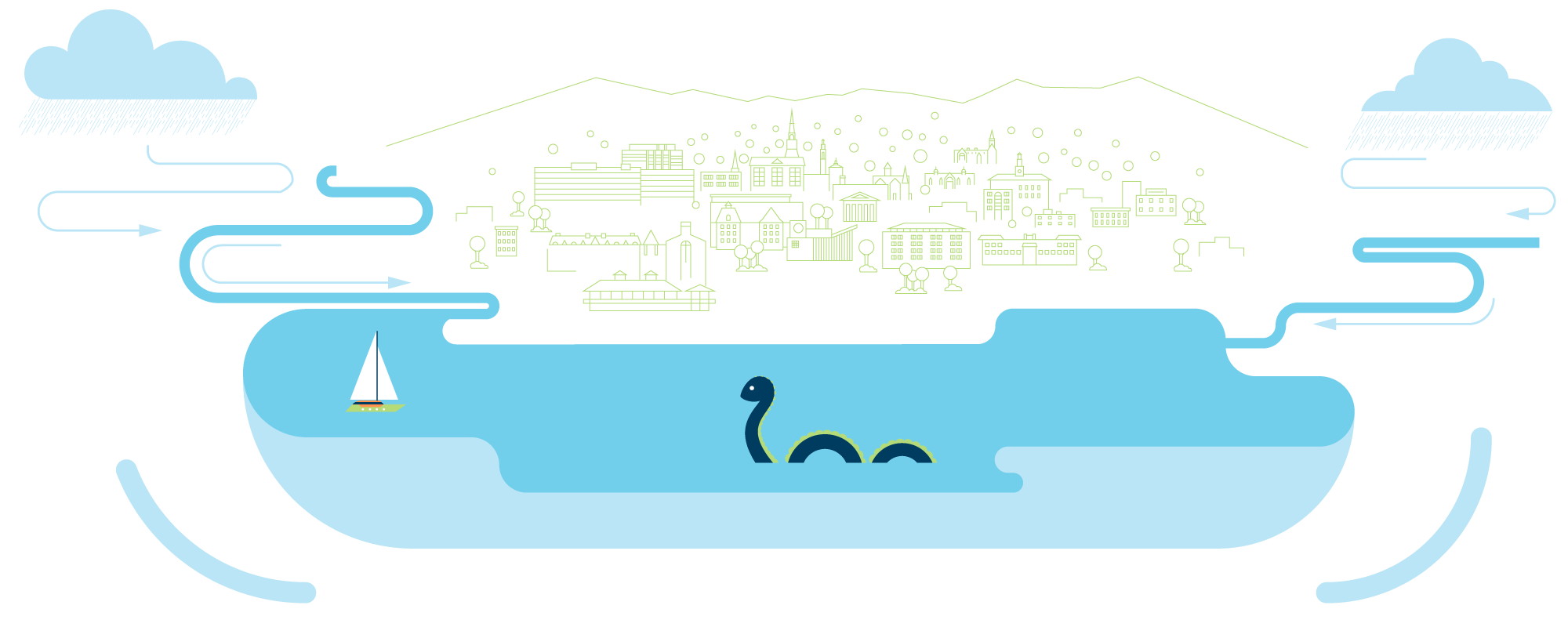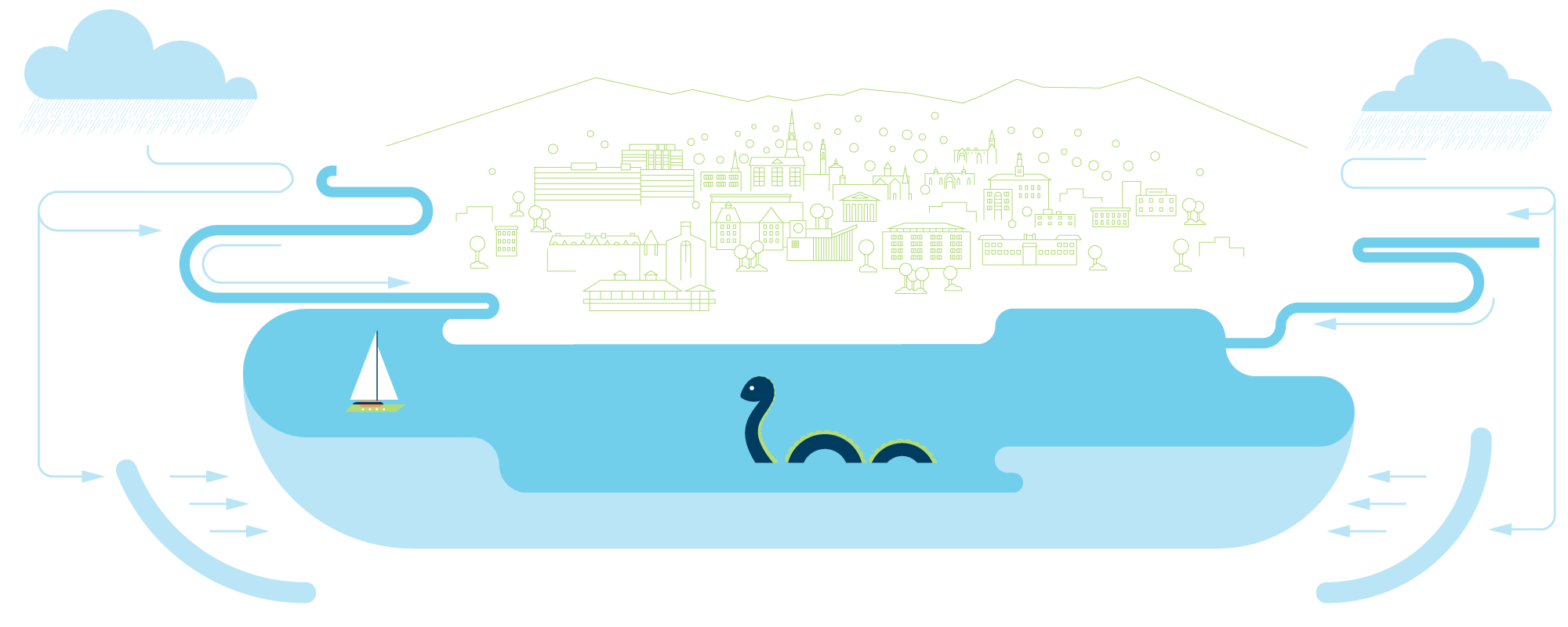Land, rivers, streams and lakes work together to process, filter, and help manage rainwater.
But when there are pollutants, erosion, sediment or other materials in rainwater runoff, it creates short and long-term problems in the environment.
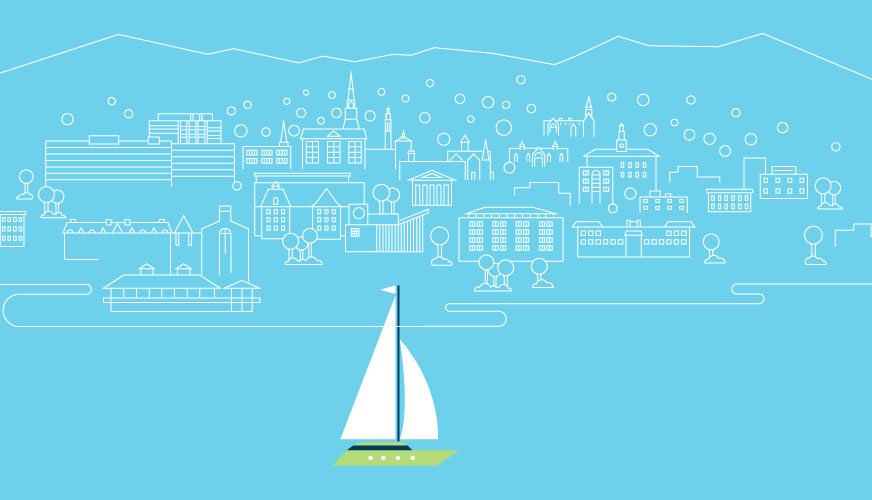
What is a Watershed?
Learn about what makes up a watershed and how stormwater runoff affects the stream, rivers, and Lake Champlain.
A watershed is an area of land that drains all the streams and rainfall to a common outlet, such as the outflow of a reservoir, mouth of a bay, or in this case, Lake Champlain. The word watershed is sometimes used interchangeably with drainage basin or catchment.
Stream Monitoring
As part of our monitoring program, we ask volunteers to monitor “impaired” streams each year. These include streams that are at-risk for pollution or other problems. We test for phosphorus, chloride, and turbidity (how cloudy the water is).
Stream Storytelling
In recent years, we asked our volunteers to record their experiences when visiting our monitored streams, including what they saw and how they felt.
Read their thoughts, and see their photos in our Google Earth Project.
For Kids
We’ve included science experiments that are easy to do with your children. The experiments highlight the impact of stormwater runoff and how it can affect the lake.
Kindergarten–Grade 03
Grades 04-06
Fun Stuff
About Algae Blooms
Cyanobacteria, or blue-green algae, is a photosynthetic bacteria that occurs naturally in waters used for recreation, such as swimming, boating, and waterskiing.
Certain environmental conditions, such as elevated levels of nutrients, warmer temperatures, still water, and sunlight exposure can promote the growth of cyanobacteria to higher densities, forming algae blooms.
Learn more about algae blooms and what you can do to help prevent them.


